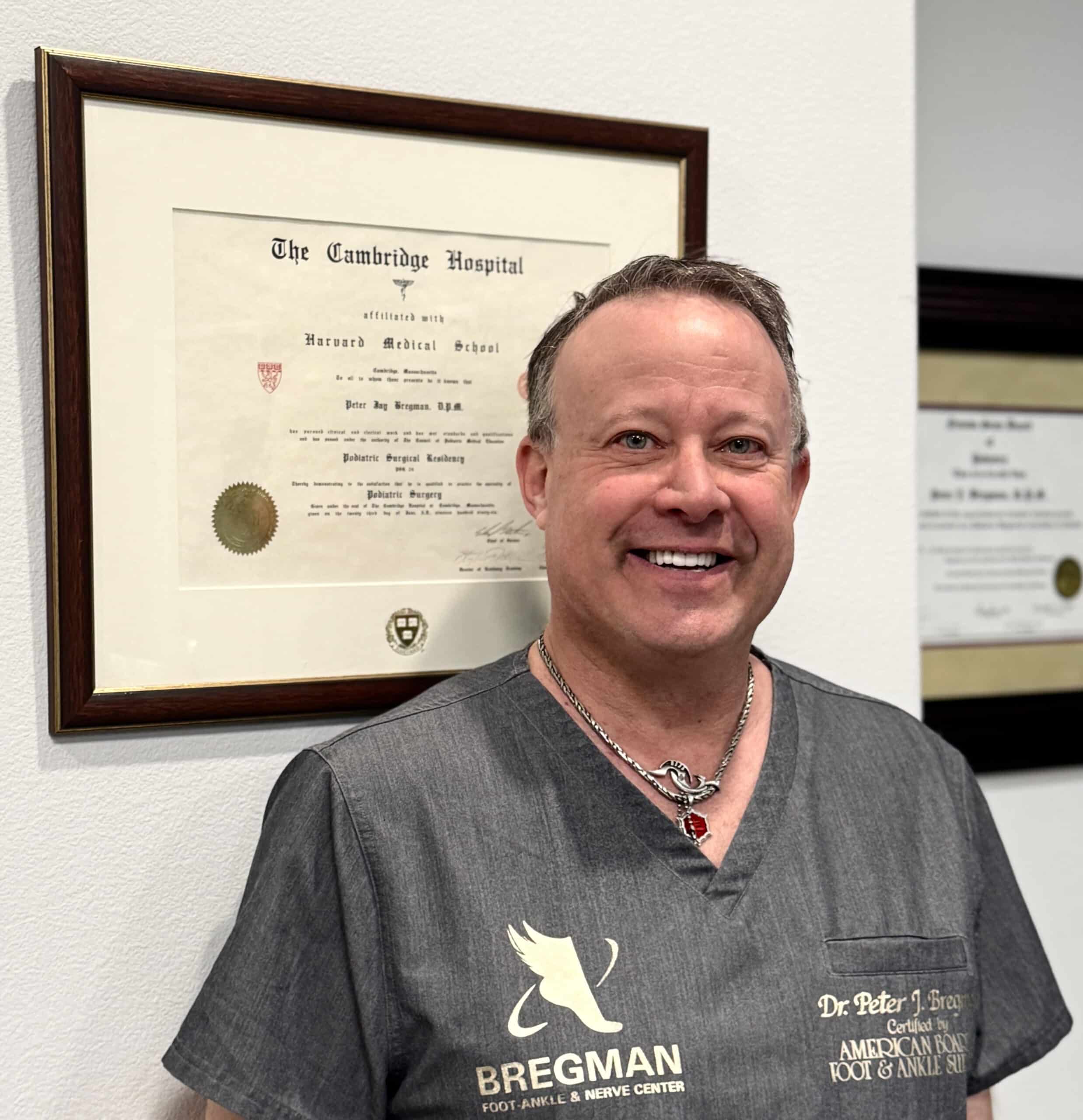
Dr. Peter J. Bregman, DPM
Top Rated Podiatrist in Las Vegas
Patient Resources
Can Flat Feet Be Corrected in Adults?
Flat feet are one of the more common conditions that most people face these days. They don’t always cause pain but sometimes affect comfort, posture, or mobility. Gentle exercises, supportive footwear, and proper medical treatments can ease strain and improve daily movement.
Most flat feet patients feel better with targeted treatments. Before anything, having a clear understanding of the condition, causes, and available options makes it simple to correct the lifestyle. Let us take a closer look at whether flat feet can be corrected as an adult.
Can Flat Feet be Treated?
Flat feet, or pes planus, a condition that affects about one-fourth of population, is usually a lifetime phenomenon. In some people, the process that stabilizes the feet with raised arches occurs through the childhood years when the tissues and ligaments tighten up but many do not.
Among the many causes of flat feet, genetics, badly fitting shoes, and overuse of the feet are common ones. The reasons for the problem in adults are mostly related to aging and also include arthritis, diabetes, or injury. The arch structure can get weakened over time, resulting in pain or loss of mobility. This is adult acquired flat foot.
To manage this condition, flat foot reconstruction surgery can be carried out for advanced cases. The operation is designed to fix the injured tendons when needed, ligaments, and bone alignment so that the foot will be supported adequately from the inside. Usually, surgery leads patients to have better mobility and comfort from the pain. Sometimes it can be done minimally invasive.
Can Flat Feet be Treated Naturally?
Natural treatments can’t cure arches permanently, but they can significantly reduce pain. Most people who have flat feet successfully control symptoms without surgery. Changing lifestyle, physical therapy, orthotics ( Inserts ) and medical care relieve symptoms in daily life.
Nonsurgical treatments include orthotics, fitted boots, stretching exercises, supportive footwear, rest, immobilization, and, in some cases, steroid injections. These measures focus on improving function and reducing pain. They help many individuals continue normal routines without major restrictions. A healthcare professional should be consulted before selecting the best plan.
Best Treatment Approaches
Orthotics are really efficient in preventing that over-pronation that causes most of the problems and allowing the patient to have an even distribution of the weight of the foot. Stretching of the feet and calf muscle strengthening exercises are usually recommended to keep up the flexibility and equilibrium of the muscles. In case the conservative treatment fails, the doctors can carry out surgical procedures such as tendon transfers or bone corrections. Still, the percentage of surgery success remains high. However, the suitability varies from one person to another.
Bottom Line
Caring and attention to detail really matter in medicine. Dr. Peter J. Bregman brings over 25 years of expertise in treating complex foot and ankle conditions, focusing especially on nerve disorders and persistent pain. His dedication to whole care, patient relationships, and innovative treatments provides optimal results.
Only in cases where it is really necessary is surgery the last resort, and the patient’s treatments are always made with great consideration and a focus on individual needs. Make an appointment with Dr. Bregman, and then you will be able to experience the kind of care that is both reassuring and done with confidence by a highly skilled professional.






